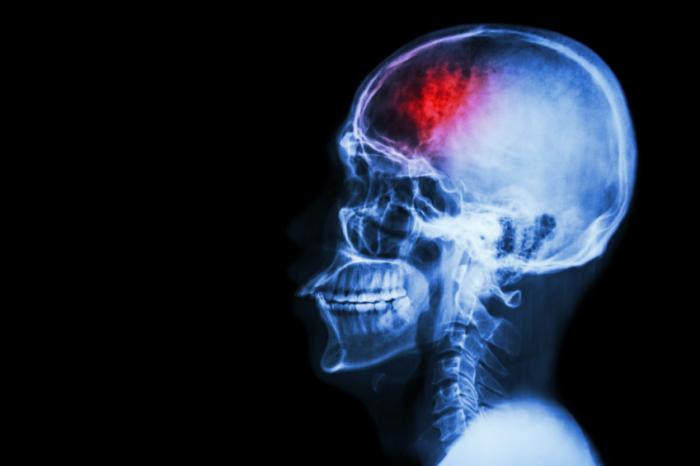More Hope for Stroke Victims
"If we can expand the treatment window to 36 hours, that's a time frame that could be relevant to 90 to 95 percent of stroke patients."
"This could really change stroke medicine as we know it. That's a big deal, because stroke is one of the leading causes of disability in most countries around the world."
Gil Van Bokkelen, head, Athersys, therapy development
"If they develop a treatment that improves outcomes for stroke patients and is effective and safe to give within a longer time window, that would be extremely welcome."
Professor Keith Muir, consultant neurologist Queen Elizabeth University Hospital
"This research shows that this new type of stem-cell treatment shows some promise in aiding stroke recovery."
"However, this was a small study and we're looking forward to seeing a larger trial."
Dr.Kate Holmes, assistant director, research, Stroke Association, United Kingdom
 |
| Image ©ElenaPavlovich/Shutterstock.com |
When someone suffers a stroke and ideally they recognize the symptoms, they must take themselves as soon as possible to a specialist hospital. They are given the space of four hours to begin blood clot-busting treatment. In the event that treatment is undertaken in the first hour post-stroke, the best outcomes can be expected. But most people aren't able to make it to a hospital within the given time frame for optimum results. As a result close to two-thirds of stroke survivors inherit a disability by the time they leave hospital.
That may soon change. Thanks to a stem-cell injection that ideal of a single hour to seek remediation may now be extended, if all goes well, to a full day and a half for most patients of stroke. British patients who were subjects in a trial, receiving treatment 36 hours after a stroke, were able to emerge from the event without permanent disability. A new intravenous solution developed in the United States has proven to simultaneously regenerate damaged tissues while reducing harmful inflammation, stimulating nerve cells aiding in the brain's recovery.
The first trial took place for a number of patients across the United Kingdom and United States, resulting in a 15 percent greater opportunity of a full recovery after 90 days in comparison to subjects placed on a placebo. A year following the stroke, the likelihood of full recovery rose to 25 percent. Those given the stem cells a day and a half following the appearance of first symptoms following a stroke were among those making an "excellent" recovery.
Caution is expressed by independent experts hoping for additional convincing data before celebrating a "miracle" treatment. Even so, the U.S. Food and Drug Administration awarded the new technology the status of fast-tracking, leading the way to a larger study to commence expeditiously. For the new Masters 2 trial, doctors are in the process of enrolling 300 stroke victims to take part. The expectation is that the drug may be licensed by 2021.
The 36 hour window is critical, given that the new stem-cell treatment is not expected to produce a good outcome after that period of time. Damaging immune cells will have left the spleen and begin their journey to the brain after 36 hours, where considerable damage can be anticipated.

"Stroke is the second leading cause of death worldwide and the major cause of disability in Europe. A stroke happens when the blood supply to part of the brain is severely reduced, often with severe effects on the body. Depending on the extent of stroke and where it occurs, about a third of stroke sufferers recover quite well, but most still experience some permanent effects and some strokes cause severe disability. Could stem cell treatments help?"
"A stroke happens when the blood supply to one or more parts of the brain is reduced or completely blocked. The blockage may be temporary or permanent and it can be caused in two different ways:
"All parts of the brain need to have a good blood supply to work properly. When the flow of blood is restricted or stopped, vital nutrients and oxygen cannot reach the cells in the brain and they are damaged or die. The effects on the body depend on which part of the brain is damaged and how long the blockage remains. A stroke can affect movement, speech, thought processes and memory. It can cause paralysis in one or more parts of the body, or loss of control of bodily functions. About 40% of people affected by stroke will have permanent symptoms that result in them needing special care. Many people’s symptoms improve significantly following a stroke, but only about 10% of patients recover fully."
- In ischaemic stroke a blood clot obstructs the supply of blood to the brain
- In hemorrhagic stroke a blood vessel bursts and bleeds into the brain
"Anyone of any age can have a stroke, but there are some important risk factors. The chance of having a stroke increases with age, for example. Certain ethnic groups are more at risk and a family history of stroke increases the chance that you may be affected. There are also risk factors that we may reduce through lifestyle changes, such as making sure any high blood pressure is treated, eating a healthy diet low in fat and salt, stopping smoking and staying physically active." EuroStemCell
Labels: Health, Outcomes, Stem Cell Therapy, Stroke, Study, Therapy

0 Comments:
Post a Comment
<< Home